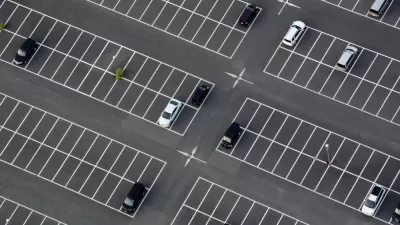The navigational software of successful driverless cars will make Google Maps seem like child's play. But can such a system replace or improve upon human instinct and adaptability?

If the driverless car becomes a reality, its mapping programs will require far more subtlety than Google Maps for the human driver. Emily Badger reports on the challenges autonomous vehicles might face.
As self-driving cars face the open road, the devil is in the details. From the article: "When cars are processing this information, each lane must be individually modeled. The car will need to know that you can't turn left from the right lane (or right from the left lane). Such maps would have to include the slope and precise curvature of each little bit of roadway, as well as the elevation (so that, for instance, a car knows where it is and what to do here). These maps would have to convey which roads travel one-way at rush hour, and exactly when, which intersections have stop signs instead of stop lights, which streets have bike lanes and on-street parking. They'll need to know the exact width of each lane, and every change in lane markings."
Companies such as HERE are developing software to encode and continually update this information, drawing on sensors mounted on driverless cars themselves. Of course, whether such a system can ever reliably replace the human driver is up for debate.
FULL STORY: What maps will look like when we need cars to read them

Pennsylvania Mall Conversion Bill Passes House
If passed, the bill would promote the adaptive reuse of defunct commercial buildings.

Planning for Accessibility: Proximity is More Important than Mobility
Accessibility-based planning minimizes the distance that people must travel to reach desired services and activities. Measured this way, increased density can provide more total benefits than increased speeds.

World's Largest Wildlife Overpass In the Works in Los Angeles County
Caltrans will soon close half of the 101 Freeway in order to continue construction of the Wallis Annenberg Wildlife Crossing near Agoura Hills in Los Angeles County.

Eviction Looms for Low-Income Tenants as Rent Debt Rises
Nonprofit housing operators across the country face almost $10 billion in rent debt.

Brightline West Breaks Ground
The high-speed rail line will link Las Vegas and the Los Angeles area.

Colorado Bans No-Fault Evictions
In most cases, landlords must provide a just cause for evicting tenants.
City of Costa Mesa
Licking County
Barrett Planning Group LLC
HUD's Office of Policy Development and Research
Mpact Transit + Community
HUD's Office of Policy Development and Research
Tufts University, Department of Urban and Environmental Policy & Planning
City of Universal City TX
ULI Northwest Arkansas
Urban Design for Planners 1: Software Tools
This six-course series explores essential urban design concepts using open source software and equips planners with the tools they need to participate fully in the urban design process.
Planning for Universal Design
Learn the tools for implementing Universal Design in planning regulations.


























